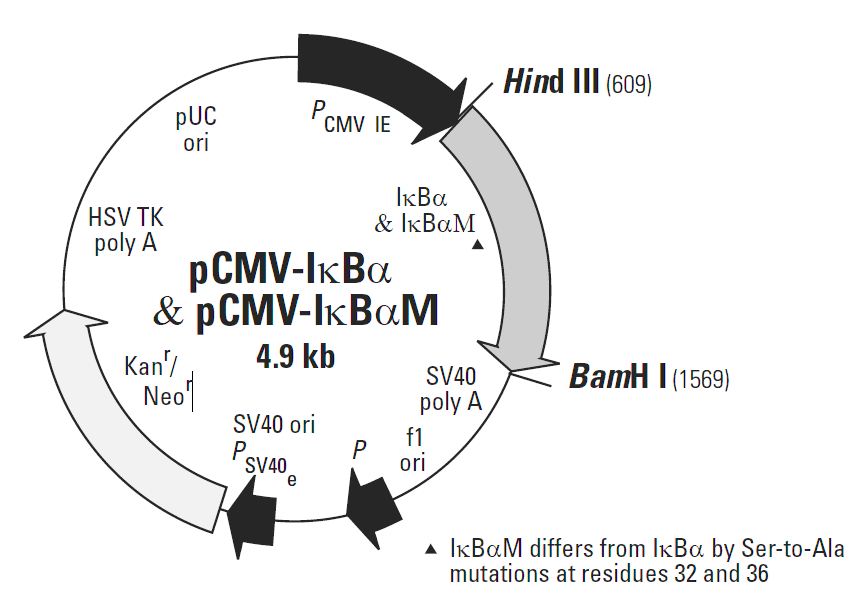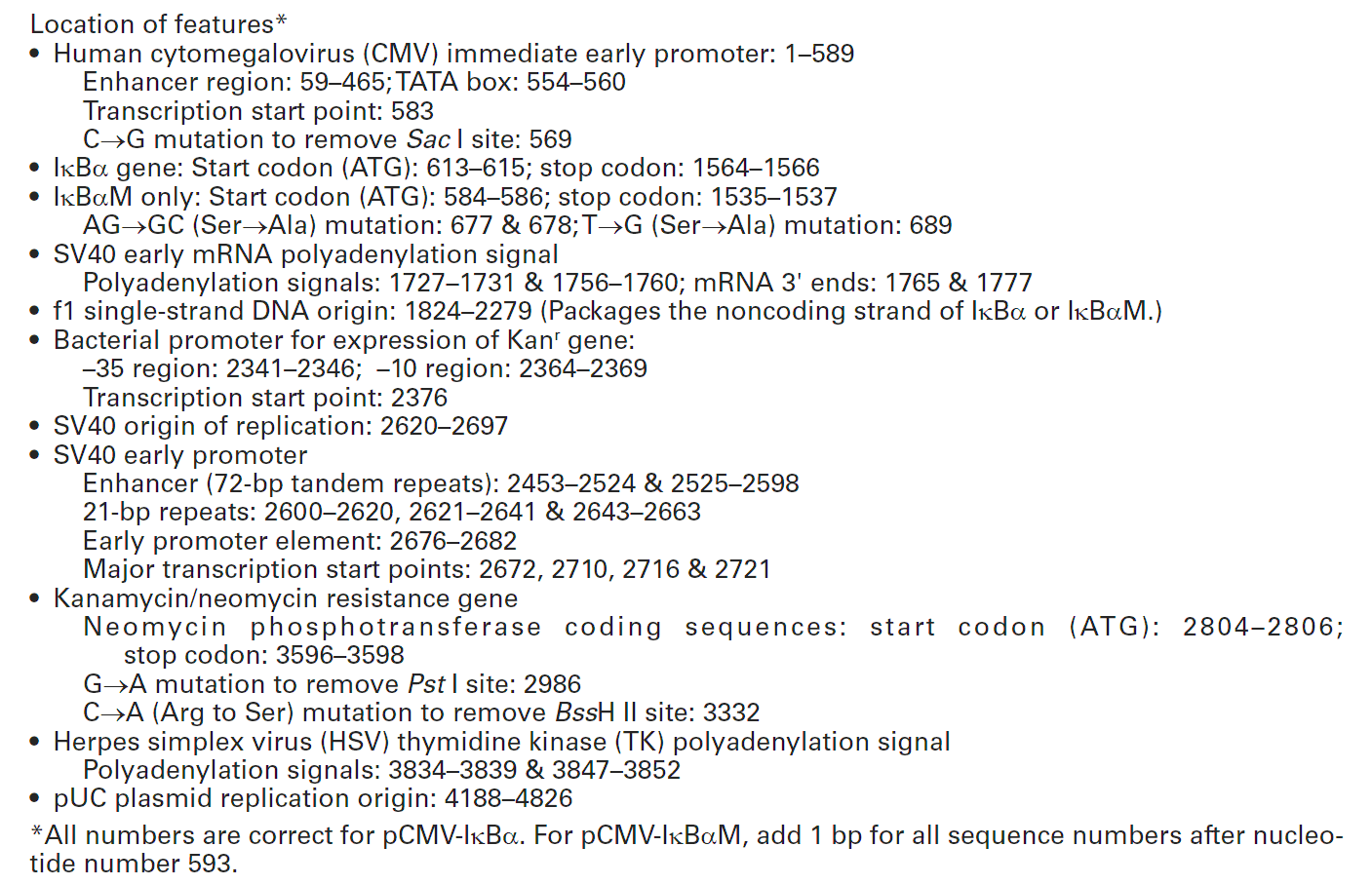pCMV-IκBα
pCMV-IκBα
编号 | 载体名称 |
北京华越洋VECT75354 | pCMV-IκBα |
pCMV-IκBα载体基本信息:
载体名称: | pCMV-IκBα 、 IκBα Dominant-Negative Vector |
质粒类型: | 信号通路分析载体;显性抑制载体 |
克隆方法: | -- |
启动子: | CMV |
载体大小: | 4.9kb |
5' 测序引物及序列: | -- |
3' 测序引物及序列: | -- |
载体标签: | -- |
载体抗性: | 卡那霉素 |
筛选标记: | G418 |
克隆菌株: | DH5a 或 HB101 |
宿主细胞(系): | -- |
备注: | pCMV-IκBα载体是信号通路分析载体; |
稳定性: | 瞬表达 |
组成型/诱导型: | 组成型 |
病毒/非病毒: | 非病毒 |
pCMV-IκBα载体质粒图谱和多克隆位点信息:


pCMV-IκBα载体简介:
IkappaBalpha (IKBA)
The IkappaBalpha Dominant-Negative Vector Set provides a convenient way to examine NFkappaB regulation by manipulating its inhibitor, IkappaBalpha, which normally keeps NFkappaB inactive and sequestered in the cytosol. This vector set gives you the ability to compare the effects of overexpressed IkappaBalpha (phosphorylated specifically by your agent) to those of IkappaBalphaM (unable to be phosphorylated under any conditions). By combining these vectors with cis-acting NFkappaB Vectors, you have a complete assay system to study and measure activation of the NFkappaB pathway.
pCMV-IκBα载体描述
The IκBα Dominant-Negative Vector Set consists of two vectors, pCMV-IκBα and pCMV-IκBαM. These vectors are convenient tools for examining NFκB regulation by manipulating its inhibitor, IκBα. In uninduced cells, IκBα binds NFκB and inhibits its activation by preventing NFκB from translocating to the nucleus. However, upon activation of NFκB by agents like TNF, IκBα can be phosphorylated, thus leading to the disassociation of IκBα from NFκB. pCMV-IκBαM contains two mutations that prevent this phosphorylation step; therefore, cells expressing IκBαM block the NFκB pathway (1–3). The IκBα gene and IκBαM gene differ by serine to alanine mutations at residues 32 and 36 (1). Both proteins are expressed at high levels from the constitutive CMV promoter.
The SV40 polyadenylation sequence directs proper processing of the 3' end of the mRNAs. The vector backbone contains an SV40 origin for replication in mammalian cells expressing the SV40 T antigen. A neomycin-resistance cassette (Neor)—consisting of the SV40 early promoter, the Tn5 neomycin/kanamycin resistance gene, and polyadenylation signals from the
Herpes simplex virus thymidine kinase (HSV TK) gene—allows kanamycin selection in E. coli and neomycin selection in eukaryotic cells. The vector backbone also provides a pUC origin of replication for propagation in E. coli and an f1 origin for single-stranded DNA production.
pCMV-IκBα使用
pCMV-IκBα can be used to screen drug candidates for their effects on NFκB pathway or to study the involvement of upstream kinases which precede IκBα degradation. IκBα overexpression eliminates any low-level stimulation produced from the culture medium, and ensures that any NFκB stimulation measured is due to the agent you are testing. pCMV-IκBαM can be used to "knock down" expression of endogenous IκBα or block NFκB signaling in a particular cell line.
In conjunction with one of our NFκB cis-acting reporter vectors, such as pNFκB-SEAP, pNFκBLuc, or pNFκB-d2EGFP (Cat. Nos. 631905, 631904, and 631803, resp.), you can measure the activation of NFκB in your system by measuring the expression of the reporter gene (4).
Both vectors can be transfected into mammalian cells using any standard method. Stable transformants can be selected using G418 (5).
Note: The following list of features is based on the pCMV-IκBα Vector. pCMV-IκBαM differs from pCMV-IκBα by two mutations at residues 32 & 36 of IκBα. Due to different subcloning parameters, the pCMV-IκBαM Vector is 30 bp smaller than pCMV-IκBα.
Propagation in E. coli
Suitable host strains: DH5α, HB101 and other general purpose strains. Single-stranded DNA production requires a host containing an F plasmid such as JM101 or XL1-Blue.
Selectable marker: plasmid confers resistance to kanamycin (50 μg/ml) to E. coli hosts.
E. coli replication origin: pUC
Copy number: ~500
Plasmid incompatibility group: pMB1/ColE1
pCMV-IκBα载体其他相关的其他类型载体:


